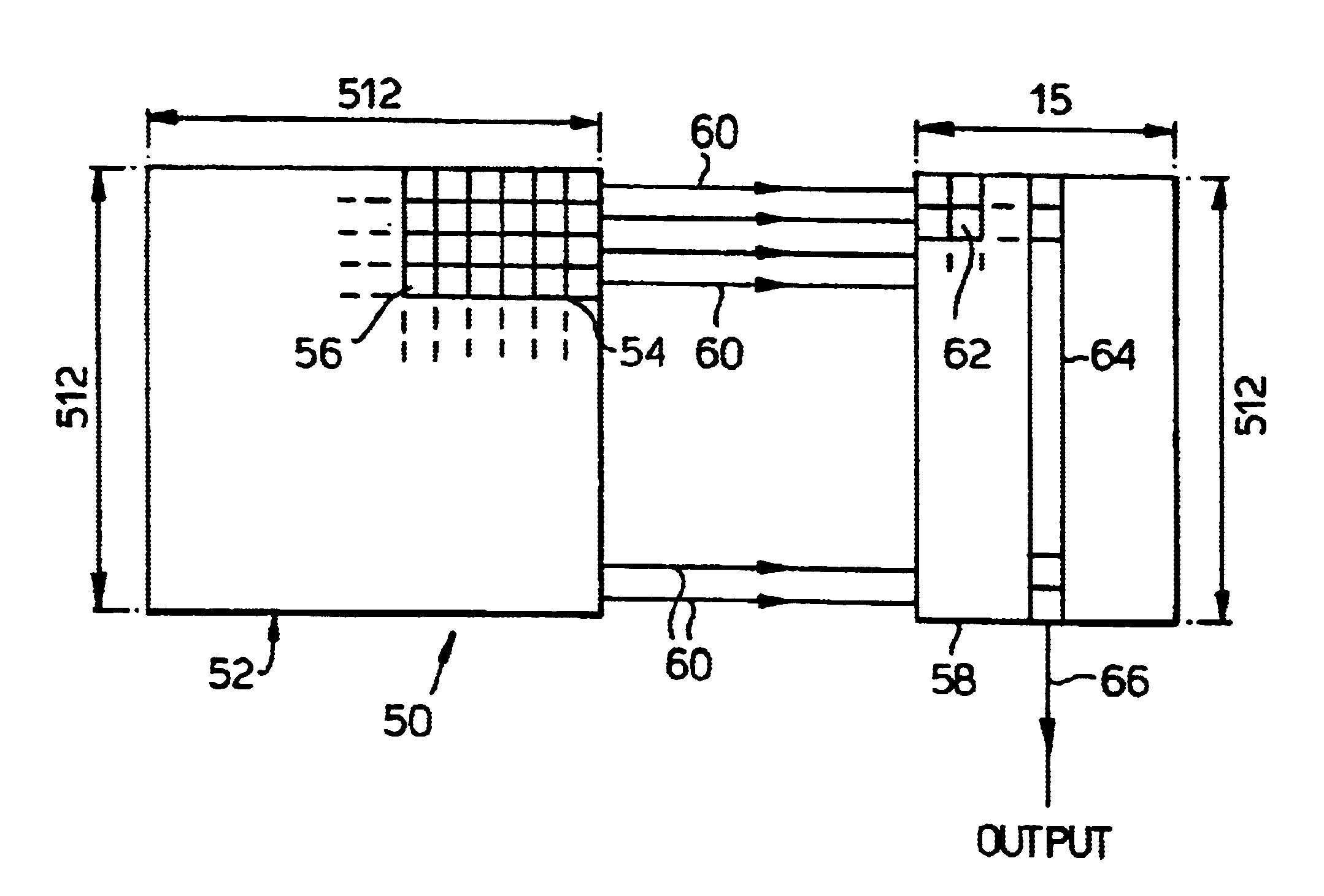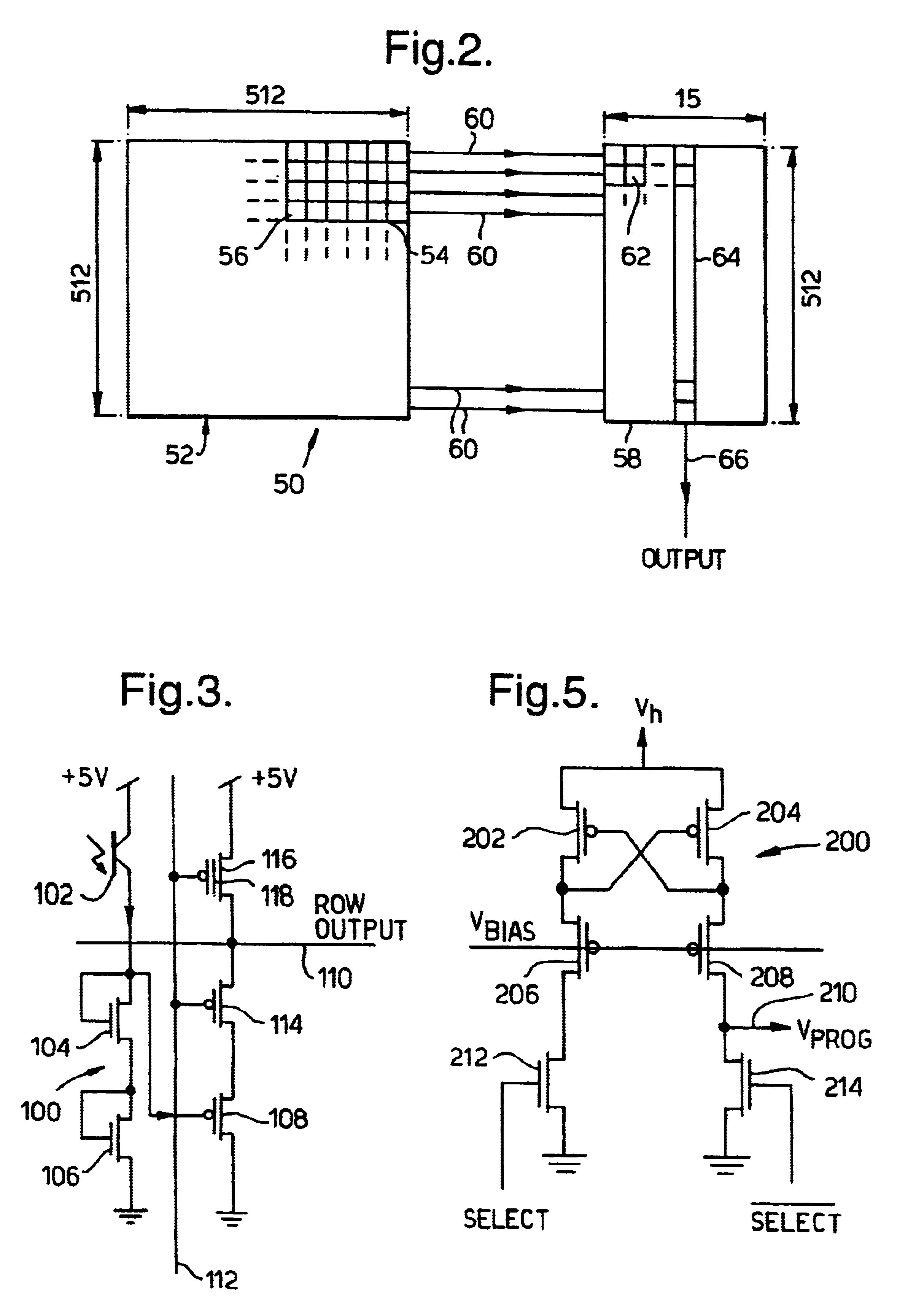Imaging system with low sensitivity to variation in scene illumination
a technology of scene illumination and image sensitivity, which is applied in the field of image sensitivity, can solve the problems of large amount of information loss, slow response time, and loss of scene detail
- Summary
- Abstract
- Description
- Claims
- Application Information
AI Technical Summary
Problems solved by technology
Method used
Image
Examples
Embodiment Construction
Referring to FIG. 1 there is shown a circuit diagram of a single pixel 10 of a prior art silicon retina developed by Mead referred to earlier. The pixel 10 comprises a receptor unit 20, a lateral averaging unit 22 and an output unit 24. The receptor unit 20 is a logarithmic detector comprising two diode connected channel metal oxide semiconductor field effect transistors (MOSFETs) 26 and 28 and a p-n-p phototransistor 30. An output 32 from the detector unit 20 is connected to both the lateral averaging unit 22 and the output unit 24.
The lateral averaging unit 22 comprises a transconductance amplifier 34. The unit 22 calculates a local average response using a network of lateral connections 36 to adjacent pixels. The amount of current injected into the network within each pixel through the transconductance amplifier 34 is dependent upon the difference between the voltage of the network, V.sub.Node and the output voltage of the receptor unit 20, V.sub.photo, thereby creating a weighte...
PUM
 Login to View More
Login to View More Abstract
Description
Claims
Application Information
 Login to View More
Login to View More - R&D
- Intellectual Property
- Life Sciences
- Materials
- Tech Scout
- Unparalleled Data Quality
- Higher Quality Content
- 60% Fewer Hallucinations
Browse by: Latest US Patents, China's latest patents, Technical Efficacy Thesaurus, Application Domain, Technology Topic, Popular Technical Reports.
© 2025 PatSnap. All rights reserved.Legal|Privacy policy|Modern Slavery Act Transparency Statement|Sitemap|About US| Contact US: help@patsnap.com



